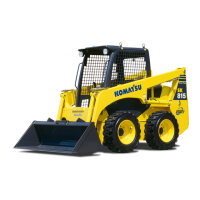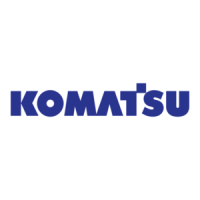What causes abnormal noise from the pump in Komatsu Utility SK714-5 Mini Skid Steers?
- Jjacob97Sep 4, 2025
If the pump emits an abnormal noise in your Komatsu Utility Mini Skid Steer, check the following: ensure there is enough oil in the tank and top it up if necessary. If the pump is faulty, consider repairing or replacing it. Also, the hydraulic oil may be unsuitable for the current temperature, so consider changing it.




